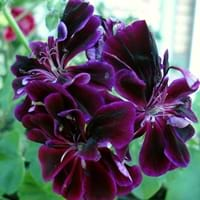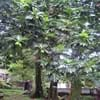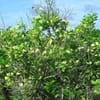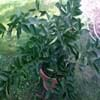Life Span
Perennial
Annual
Type
Fruit
Tender Perennial
Origin
Southeastern Asia, Melanesia, Micronesia
Hybrid origin
Types
Jackfruit, Breadnut, Figs
Not Available
Number of Varieties
Not Available
Habitat
Lowland evergreen rainforest, Riverine swamp forest
All sorts of environments
USDA Hardiness Zone
10-15
10-15
AHS Heat Zone
12-9
Not Available
Sunset Zone
H2
8, 9, 12, 13, 14, 15, 16, 17, 18, 19, 20, 21, 22, 23, 24
Habit
Oval or Rounded
Clump-Forming
Flower Color
Yellow green
Hot Pink, Coral
Flower Color Modifier
Bicolor
Bicolor
Fruit Color
Yellow, Green, Yellow green, Brown
Not Available
Leaf Color in Spring
Dark Green
Green
Leaf Color in Summer
Dark Green
Green
Leaf Color in Fall
Dark Green
Green
Leaf Color in Winter
Light Green
Light Green
Leaf Shape
Irregular
Acicular
Plant Season
Spring, Summer, Fall, Winter
Spring, Summer, Fall, Winter
Sunlight
Full Sun, Partial Sun
Full Sun, Partial Sun
Type of Soil
Loam, Sand
Loam, Sand
The pH of Soil
Acidic, Neutral, Alkaline
Neutral
Soil Drainage
Average
Well drained
Bloom Time
Indeterminate
Indeterminate
Tolerances
Drought
Drought
Where to Plant?
Ground
Ground, Pot
How to Plant?
Grafting, Rooted stem cutting, Seedlings
Leaf Cutting, Root Division, Seedlings, Stem Cutting
Plant Maintenance
Medium
Medium
Watering Requirements
Average Water Needs, Never Over-water, occasional watering once established, Water daily during growing season, Water Deeply
Do not water excessively
In Summer
Lots of watering
Moderate
In Spring
Moderate
Moderate
In Winter
Average Water
Average Water
Soil pH
Acidic, Neutral, Alkaline
Neutral
Soil Type
Loam, Sand
Loam, Sand
Soil Drainage Capacity
Average
Well drained
Sun Exposure
Full Sun, Partial Sun
Full Sun, Partial Sun
Pruning
Prune every year, Prune if you want to improve plant shape, Remove branches, Remove damaged leaves, Remove dead branches, Remove dead leaves, Remove dead or diseased plant parts
Prune regularly, Remove damaged leaves, Remove dead branches, Remove dead leaves
Fertilizers
20-20-20 amount, All-Purpose Liquid Fertilizer
All-Purpose Liquid Fertilizer, fertilize every 2-3 weeks while growing
Pests and Diseases
Red blotch
Red blotch, Whiteflies
Plant Tolerance
Drought
Heat And Humidity
Flower Petal Number
Not Available
Semi-Double
Fragrant Bark/Stem
No
Yes
Foliage Texture
Coarse
Medium
Foliage Sheen
Glossy
Matte
Attracts
Birds, Not Available
Not Available
Allergy
allergic reaction
Not Available
Aesthetic Uses
Not Used For Aesthetic Purpose
Showy Purposes
Beauty Benefits
Good for skin, Promotes Healthy Hair, Removes dandruff, Speed hair growth
Moisturizing, Skin cleanser
Environmental Uses
Air purification, Nesting sites for birds, Shadow Tree, Wildlife
Air purification, Insect Repellent
Medicinal Uses
Cancer, cholesterol-lowering, Heart problems, High cholestrol, Immunity, Skin Disorders, Weight loss
Fever, Intestinal irritations, Kidney problems, Respiratory Disorders, Wounds
Part of Plant Used
Fruits
Flowers
Other Uses
Used As Food, Used for its medicinal properties
Cosmetics, Culinary use, Making Perfumes, Oil is used for aromatherapy, Showy Purposes, Used as a nutritious food item
Used As Indoor Plant
No
Yes
Used As Outdoor Plant
Yes
Yes
Garden Design
Edible, Feature Plant, Fruit / Fruit Tree, Shade Trees, Tropical
Bedding Plant, Container, Edging, Hanging Basket, Houseplant, Mixed Border
Botanical Name
ARTOCARPUS altilis
PELARGONIUM 'Balgalpipn'
Common Name
Breadfruit
Hybrid Ivy-leaved Geranium, Zonal Geranium
In Hindi
Breadfruit Tree
Pelargonium
In German
Brotfruchtbaum
Pelargonium
In French
Breadfruit Arbre
Pelargonium
In Spanish
árbol del pan
Pelargonium
In Greek
αρτόδεντρο Δέντρο
Pelargonium
In Portuguese
Árvore de fruta-pão
pelargônio
In Polish
Breadfruit drzewo
Pelargonium
In Latin
Arum
Pelargonium
Phylum
Magnoliophyta
Magnoliophyta
Class
Magnoliopsida
Magnoliopsida
Order
Urticales
Geraniales
Family
Moraceae
Geraniaceae
Genus
Artocarpus
Pelargonium
Clade
Angiosperms, Eudicots, Rosids
Angiosperms, Eudicots, Rosids
Tribe
Artocarpeae
Not Available
Subfamily
Not Available
Not Available
Season and Care of Breadfruit and Pelargonium
Season and care of Breadfruit and Pelargonium is important to know. While considering everything about Breadfruit and Pelargonium Care, growing season is an essential factor. Breadfruit season is Spring, Summer, Fall and Winter and Pelargonium season is Spring, Summer, Fall and Winter. The type of soil for Breadfruit is Loam, Sand and for Pelargonium is Loam, Sand while the PH of soil for Breadfruit is Acidic, Neutral, Alkaline and for Pelargonium is Neutral.
Breadfruit and Pelargonium Physical Information
Breadfruit and Pelargonium physical information is very important for comparison. Breadfruit height is 2,600.00 cm and width 600.00 cm whereas Pelargonium height is 25.40 cm and width 30.50 cm. The color specification of Breadfruit and Pelargonium are as follows:
Breadfruit flower color: Yellow green
Breadfruit leaf color: Dark Green
Pelargonium flower color: Hot Pink and Coral
- Pelargonium leaf color: Green
Care of Breadfruit and Pelargonium
Care of Breadfruit and Pelargonium include pruning, fertilizers, watering etc. Breadfruit pruning is done Prune every year, Prune if you want to improve plant shape, Remove branches, Remove damaged leaves, Remove dead branches, Remove dead leaves and Remove dead or diseased plant parts and Pelargonium pruning is done Prune regularly, Remove damaged leaves, Remove dead branches and Remove dead leaves. In summer Breadfruit needs Lots of watering and in winter, it needs Average Water. Whereas, in summer Pelargonium needs Moderate and in winter, it needs Average Water.





